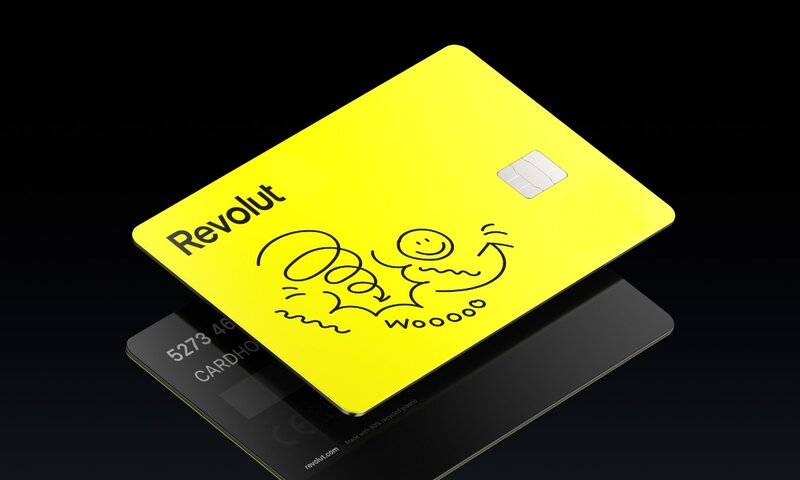You’ve got textbooks and laptops to pay for as well as all the fun stuff like rent, bills and groceries, not to mention trying to scrounge enough money for those festival tickets or Sunday arvo hangouts at the pub with your mates.
If you’re only able to work part-time or casually like most uni students, it can be even harder to afford your course fees and living expenses, and you might need some extra financial assistance to get by.
This article will cover the financial assistance options available for students in Australia, such as student loans, personal loans, car loans and more.
In the market for a personal loan? The table below features personal loans with some of the lowest interest rates on the market.
What is a student loan?
In Australia, there is a student loans system called the Higher Education Loan Program (HELP). Under this program, eligible students studying in a Commonwealth Supported Place (CSP) can have their student debt covered before repaying it later with no interest.
Instead of being charged interest, the debt is annually compounded by the national indexation rate. If that just sounded like a load of gibberish, it basically means the debt is raised each year in line with the cost of living, aka inflation.
HELP Repayments only start once your income has reached a certain level. In the 2020/21 financial year, repayments only commence when you begin earning above $46,620. The more you earn above that threshold, the higher your repayments will be.
International students are not eligible for the HELP scheme, though many universities offer some kind of study loan for international students.
It’s important to keep in mind that a HECS-HELP loan only covers course fees and not expenses like textbooks, laptops, other specialised course supplies, or accommodation costs. If you find that you need extra financial help outside HECS-HELP, you could apply for a personal loan.
Read more: How does HECS-HELP work?
Personal loan options for students
If you’re a student who needs extra financial assistance, these personal loan options could help you:
Secured personal loan
A secured personal loan is a loan secured against something you own, like a car. The lender uses this asset as security for the loan in case you’re unable to make the repayments.
Secured loans usually have lower interest rates because you’re putting up an asset as security for the loan, and you can generally borrow more money than an unsecured loan. But on the downside, you can have that secured asset repossessed if you can’t repay the loan.
Unsecured personal loan
An unsecured personal loan has no asset attached to it as security. Instead, the lender will review your income, finances and expenses to determine whether or not you can afford the loan. As there’s no loan security, interest rates on unsecured personal loans are usually higher compared to secured loans because the risk to the lender is greater.
You also generally can’t borrow as much money with an unsecured personal loan, but this will depend on the loan.
Guarantor personal loan
A guarantor personal loan is backed by a family member or friend who has agreed to be responsible for the repayments if you default on the loan. A guarantor acts as security for the loan, making it less risky for the lender and easier to get loan approval.
A guarantor personal loan could be a good option for some students, particularly if they have an insecure income that could make it difficult to get approved for another personal loan. But both the student and the guarantor need to be aware of the risks.
Related: Home loans for students.
Car loan
Technically, a car loan is a type of personal loan designed for the specific purchase of a car. If you’re a student on a student income, you probably can’t afford to buy a car outright and it could take you a long time to save up for one if you’re only working casually or part-time.
A car loan allows you to borrow money to purchase a car, new or used, and repay the money back over a set period of time with interest. Students are generally eligible for a car loan as long as they’re over the age of 18, are an Australian citizen or permanent resident, and have a job or regular source of income.
Some lenders may have extra lending criteria and may not lend money to applicants whose primary source of income is Austudy, Youth Allowance or JobSeeker (formerly Newstart) payments. International and exchange students are generally ineligible to apply for a car loan, but it’s always worth checking with the lender first.
See also: Car loans for students
Medical student loan
Some lenders offer medical student loans to students studying medicine, dental or veterinary degrees. Medical student loans are generally offered to students in the final year of their degree to help cover course fees, living expenses, debt consolidation, cars for internship placements, holidays, and more.
Graduate loan
If you’re not a medical student, you can take out a graduate loan. These loans are similar to Medical student loans as they are offered to new and returning students to help them pay for their study costs.
You can get graduate loans from institutions like MoneyMe, which offers a graduate loan up to $50,000, while HomeStart Finance also offers a low deposit graduate loan to help eligible graduates in South Australia build or buy a home.
Other financial assistance options for students
No interest loan
No Interest Loans are available to certain Australians as a way of offering them affordable and safe credit. The No Interest Loan Scheme (NILS) is run by Good Shepherd Microfinance and is supported by the Australian Government, providing up to $1,500 to those who:
-
Have either a Health Care or Pension Card, or
-
Earn less than $45,000 a year after tax as a single ($60,000 for couples or those with dependents)
-
Have lived at their current or previous address for at least three months, and
-
Can show they have the ability to repay the loan.
A no interest loan can only be used to pay for essential goods like car repairs or registration, household items like fridges or washing machines, some medical and dental services, and educational resources like textbooks or laptops.
ABSTUDY
ABSTUDY is a living allowance payment for Aboriginal or Torres Strait Islanders under the age of 24 who are studying or enrolled in an Australian Apprenticeship. It can help with the costs of textbooks, stationary and living costs.
Austudy
Austudy is a payment for students over the age of 25 who are either enrolled full time in an approved course or an apprenticeship. An income and assets test applies.
Youth Allowance
Youth Allowance is a payment for full-time students and apprentices between the ages of 16-24. You can also receive Youth Allowance if you’re under the age of 21 and studying part-time while looking for work. An income and assets test determines eligibility and how much you could receive.
What can students use a personal loan for?
If you’re taking out a personal loan, there’s generally a lot of flexibility in terms of what you can use that loan for and how much you can get. You could use a personal loan to pay for a new laptop, a car, a major expense that’s come up, consolidate any debts you have, or even finance an end of semester holiday.
A HECS-HELP loan on the other hand can only be used to pay for your course fees. Similarly, a graduate loan, medical student loan, a no interest loan, and some government payments generally have restrictions around what they can be used for. Personal loans give you more freedom, but getting approved for one will be usually harder than these other options.
Am I eligible for a personal loan?
Check you meet the eligibility criteria
Eligibility criteria for personal loans can vary from lender to lender, but generally include the following:
-
You must be 18 years or over
-
You must be a permanent Australian resident
-
You must currently be employed and have a regular income
-
You must be able to demonstrate a good credit history for the last five years
-
You must be free from bankruptcy for the last seven years
Some lenders may have other criteria, such as meeting a certain minimum income threshold while others may accept Centrelink payments. Some lenders also specialise in offering ‘bad credit’ loans to people with a negative credit history.
If you aren’t sure whether you meet the eligibility criteria, it’s best to check with the lender before applying. This could help you avoid applying for a loan you aren’t eligible for, which would likely be listed on your credit report and could hinder you down the track.
If you’re an international student and need financial assistance, your first port of call should be to ask your educational institution what financial help you’re eligible for.
How to compare personal loans
Before deciding on a personal loan, make sure you compare a range of different products on the following.
Can you afford the loan?
Even if you think you may be able to get approved for a high loan amount, you need to decide how much debt you’re comfortable taking on and whether you can afford to repay it. Chances are you’re probably only working casually or part-time, so you need to take your lower income into account when factoring in your repayments.
If you don’t think you would be able to comfortably afford the repayments on your income after all your regular living expenses have been paid for, it may be time to reconsider a lower loan amount or your need for a personal loan in the first place.
Use a personal loan calculator first to work out if it’s something you can reasonably afford. If not, you may decide it’s better to save up or borrow money from a family member or friend.
How much can you borrow?
You also need to check that you will be able to borrow the amount you need, as there’s no point in borrowing $20,000 if you only need $10,000. Some lenders have lower maximum loan amounts than other lenders, so this is important to check before applying. Remember that the amount you’re approved for will be determined by your ability to repay the loan plus any other eligibility criteria set out by the lender.
If you only need to borrow a small amount of money (say under $5,000) a payday loan could potentially be a better option provided you thoroughly do your research first, as payday loans can be very risky if not used properly. For smaller amounts like this, it may be wiser to take on a few extra shifts at work and save up if you can.
See more: Payday loans vs personal loans: Which is right for you?
A credit card is another product that can be used for short-term borrowing as long as you understand the pros and cons, while a few banks offer credit cards solely for students.
Are the interest rate and fees competitive?
You obviously don’t want to pay more for a personal loan than you need to, so it’s important to compare a bunch of them and see how the interest rate and fees on each loan stack up. You could potentially save hundreds or even thousands in interest by choosing a lower interest rate.
Keep in mind that your interest rate can also be determined by factors such as your risk as a borrower and whether you take out a secured or unsecured personal loan.
Are there restrictions around what you can use the loan for?
You can use a personal loan for almost anything, but it’s always worth double-checking with the lender that you can use the personal loan for what you need it for. Business expenses are generally not covered by personal loans, for example, so if you’re trying to build a startup company on top of your studies, you may need to consider another financing option.
Savings.com.au’s two cents
If you’re a student it’s safe to assume you’re probably on a tight income, so you really need to weigh up the pros and cons of taking out a personal loan and think about whether it’s right for you. If you aren’t confident in your ability to repay the loan, think you could get a better deal with an alternative financing option, or think you would be taking on unnecessary debt then you should reconsider your need for one.
But if you decide that a personal loan is right for you, make sure you carefully compare loans by looking at the interest rates and fees, the repayment amount and flexibility, the eligibility criteria, and how much you can borrow.
See also: Should you take out a personal loan?
Once it’s time to apply for a personal loan, thoroughly read through all the documentation before you sign away. As soon as you’ve taken out a personal loan, the fun part begins: paying it back!
Photo by LinkedIn Sales Navigator from Pexels






 Harrison Astbury
Harrison Astbury
 Harry O'Sullivan
Harry O'Sullivan